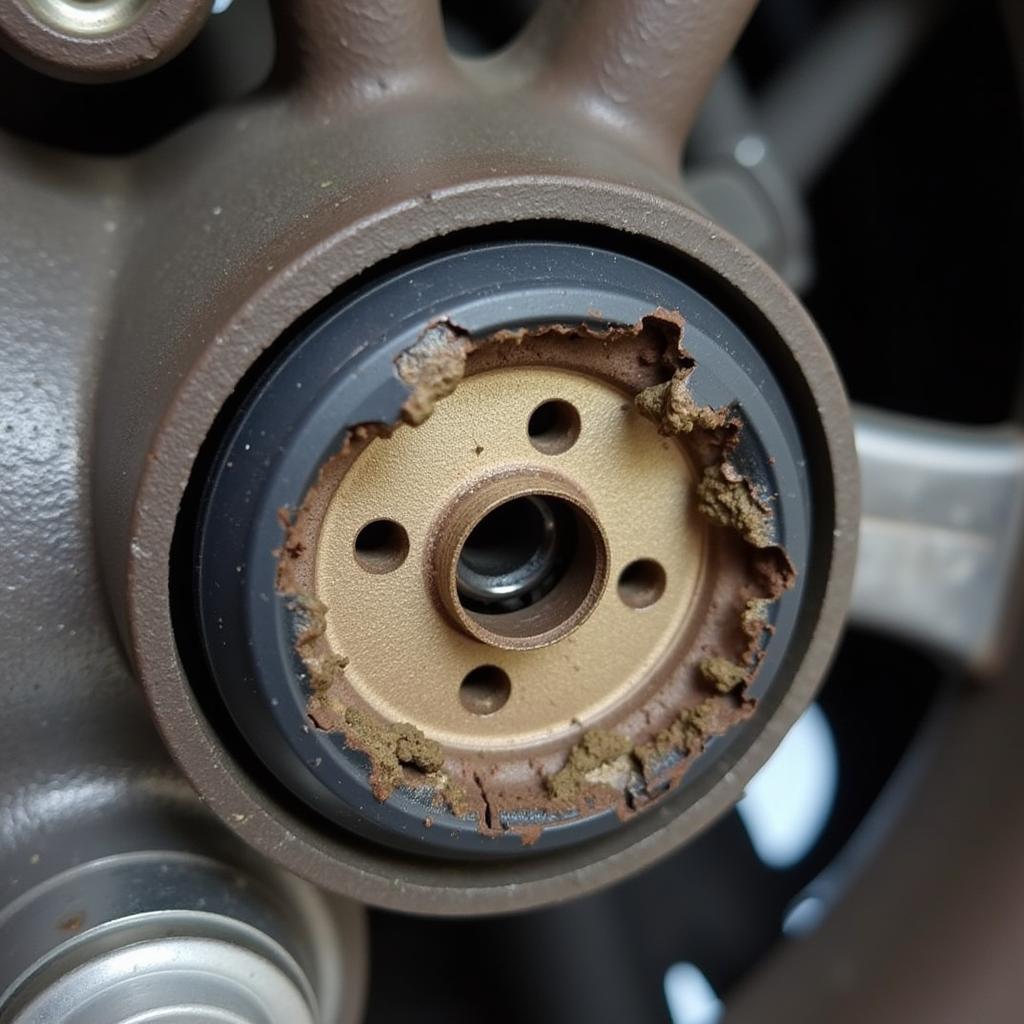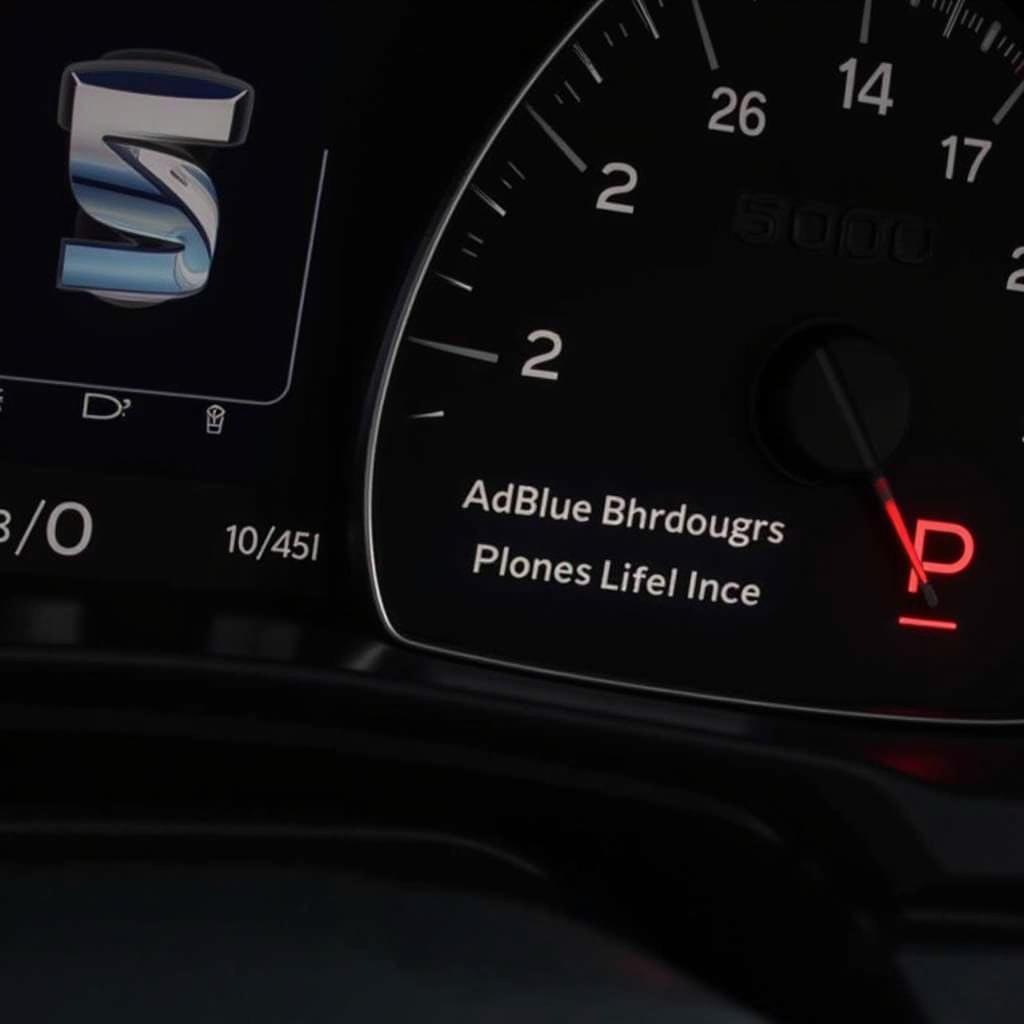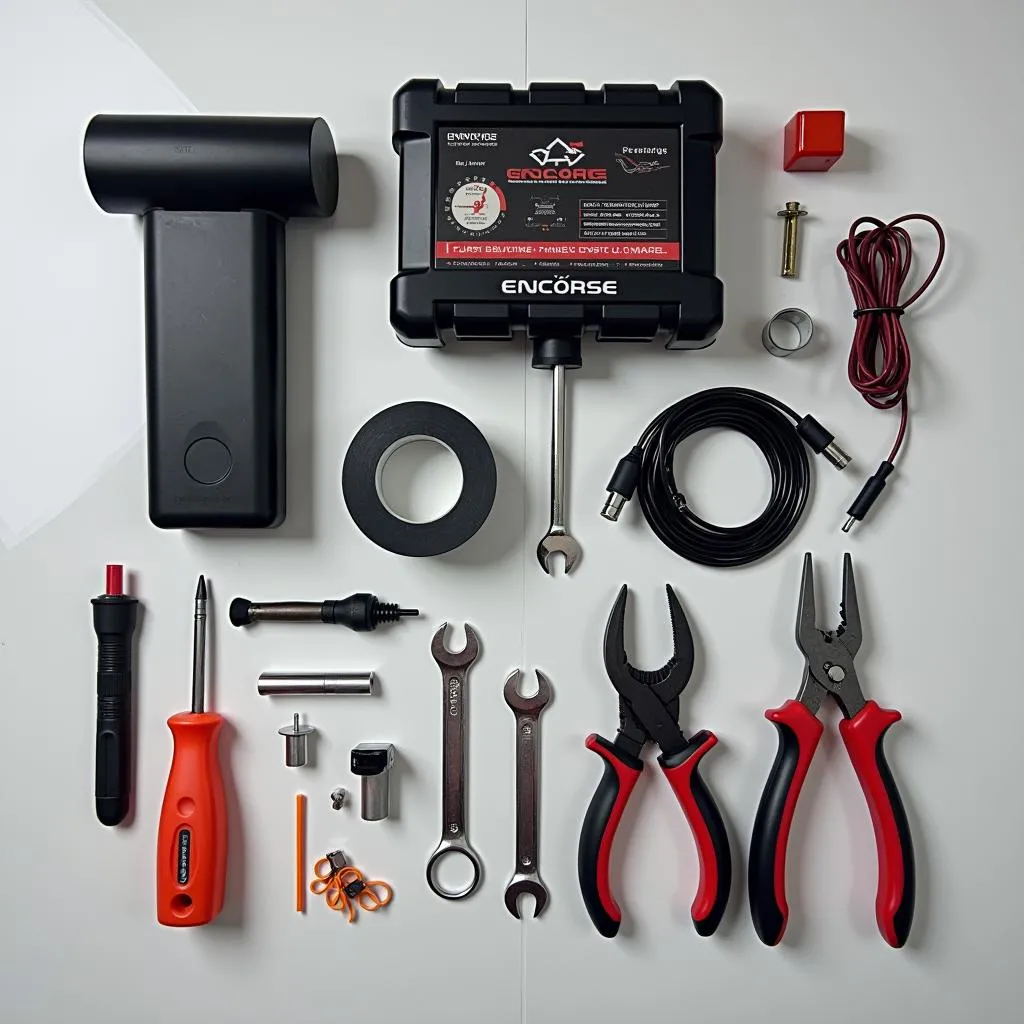Seeing a black brake system warning light illuminated on your dashboard can be a nerve-wracking experience. This light, often accompanied by the words “BRAKE” or “ABS,” indicates a potential issue with your vehicle’s braking system that requires immediate attention. While it can be alarming, it’s crucial to remain calm and understand the possible causes and solutions to address this warning effectively.
This comprehensive guide delves into the common reasons behind the engine dash brake system warning light illuminating and provides you with the knowledge to diagnose and potentially resolve the issue.
Understanding Your Vehicle’s Brake System Warning Light
Your vehicle’s brake system warning light is a crucial part of its safety system, designed to alert you of potential problems that could compromise your ability to brake safely. There are typically three main scenarios that trigger this warning:
- Parking Brake Engaged: This is the most common and least serious reason. If the light is on, ensure your parking brake is fully released.
- Low Brake Fluid: Your brake system relies on hydraulic pressure to function correctly. Low brake fluid level can significantly reduce braking power.
- Serious Brake System Malfunction: This could be anything from a faulty ABS sensor to a problem with the master cylinder or brake lines. If the warning light stays on after checking the parking brake and brake fluid, it’s crucial to have your vehicle inspected by a qualified mechanic immediately.
Diagnosing the Problem: A Step-by-Step Guide
Before heading to the mechanic, you can perform some basic checks to potentially pinpoint the issue:
- Check Your Parking Brake: Ensure the parking brake is fully disengaged.
- Inspect Brake Fluid Level: Locate the brake fluid reservoir under the hood (refer to your owner’s manual for the exact location). Check the fluid level; if it’s low, add the recommended brake fluid type (DOT 3 or DOT 4, as specified in your manual).
- Visual Inspection: Carefully examine the visible brake components, such as brake lines and calipers, for any signs of leaks, damage, or wear and tear.
Important Note: If the warning light remains illuminated after these checks, do not attempt to drive the vehicle. Instead, contact a qualified mechanic or have your vehicle towed to a trusted repair shop.
Common Causes of an Illuminated Brake System Warning Light
Beyond a simple parking brake issue or low brake fluid, several other malfunctions can trigger the engine dash brake system warning light:
1. Faulty ABS Sensors
Anti-lock Braking System (ABS) sensors monitor the speed of each wheel and prevent wheel lockup during hard braking. A malfunctioning ABS sensor can disrupt this process and illuminate the warning light.
Expert Insight: “ABS sensors are exposed to harsh conditions and can deteriorate over time. A common sign of a failing ABS sensor is the ABS light illuminating intermittently,” says John Miller, a seasoned automotive electrician with over 20 years of experience.
 close-up-of-a-damaged-abs-sensor
close-up-of-a-damaged-abs-sensor
2. Brake Master Cylinder Problems
The brake master cylinder plays a vital role in converting the force applied to the brake pedal into hydraulic pressure. A leaking or malfunctioning master cylinder can lead to a loss of brake pressure and trigger the warning light.
3. Worn Brake Pads and Rotors
Worn brake pads and rotors can also cause the brake system warning light to illuminate. Most vehicles are equipped with wear indicators that make a screeching sound when the pads are thin, but a faulty indicator or ignoring the noise can lead to the warning light illuminating.
4. Issues with the Brake Lines
Brake lines carry the brake fluid from the master cylinder to the wheels. Leaking, corroded, or damaged brake lines can disrupt the hydraulic pressure and trigger the warning light.
Addressing the Brake System Warning Light: What to Do
If the engine dash brake system warning light remains illuminated after checking the parking brake and brake fluid, it’s crucial to consult a qualified mechanic immediately.
Here are some steps to take:
- Avoid Driving: Driving with a potential brake system issue can be extremely dangerous.
- Contact a Mechanic: Schedule an appointment with a trusted mechanic specializing in brake repair.
- Describe the Symptoms: Provide the mechanic with a detailed description of when the light illuminates and any other symptoms you’ve noticed.
- Follow Recommendations: Based on the diagnosis, the mechanic will recommend necessary repairs. Ensure you fully understand the scope of work and associated costs.
Preventing Future Brake System Issues
Maintaining a regular brake inspection schedule is essential for preventing unexpected brake system issues:
- Regular Inspections: Adhere to your vehicle manufacturer’s recommended maintenance schedule for brake inspections.
- Brake Fluid Flush: Flush and replace your brake fluid every 2-3 years or as recommended in your owner’s manual.
- Quality Parts: When replacing brake components, choose high-quality parts from reputable manufacturers.
Conclusion
The engine dash brake system warning light, especially when illuminated in black, demands immediate attention. While it might be due to something as simple as an engaged parking brake, it could also signify a more serious problem requiring professional attention. By understanding the causes and following the recommended steps for diagnosis and repair, you can ensure the safety and reliability of your vehicle’s braking system.



